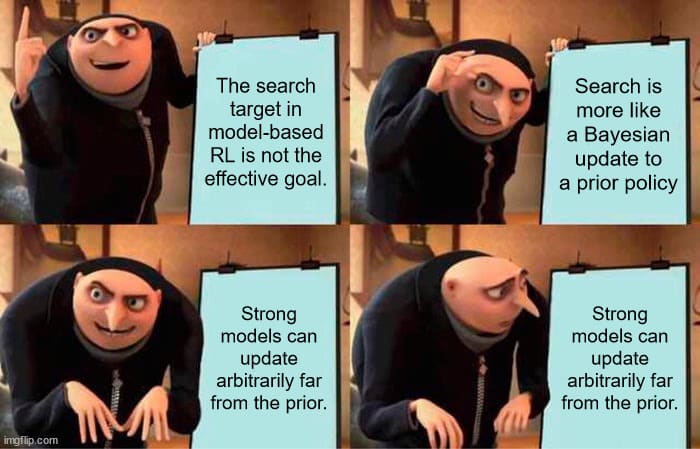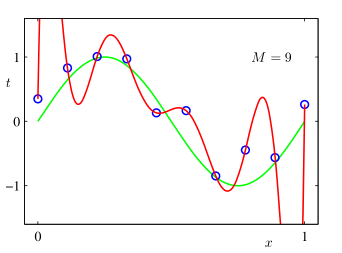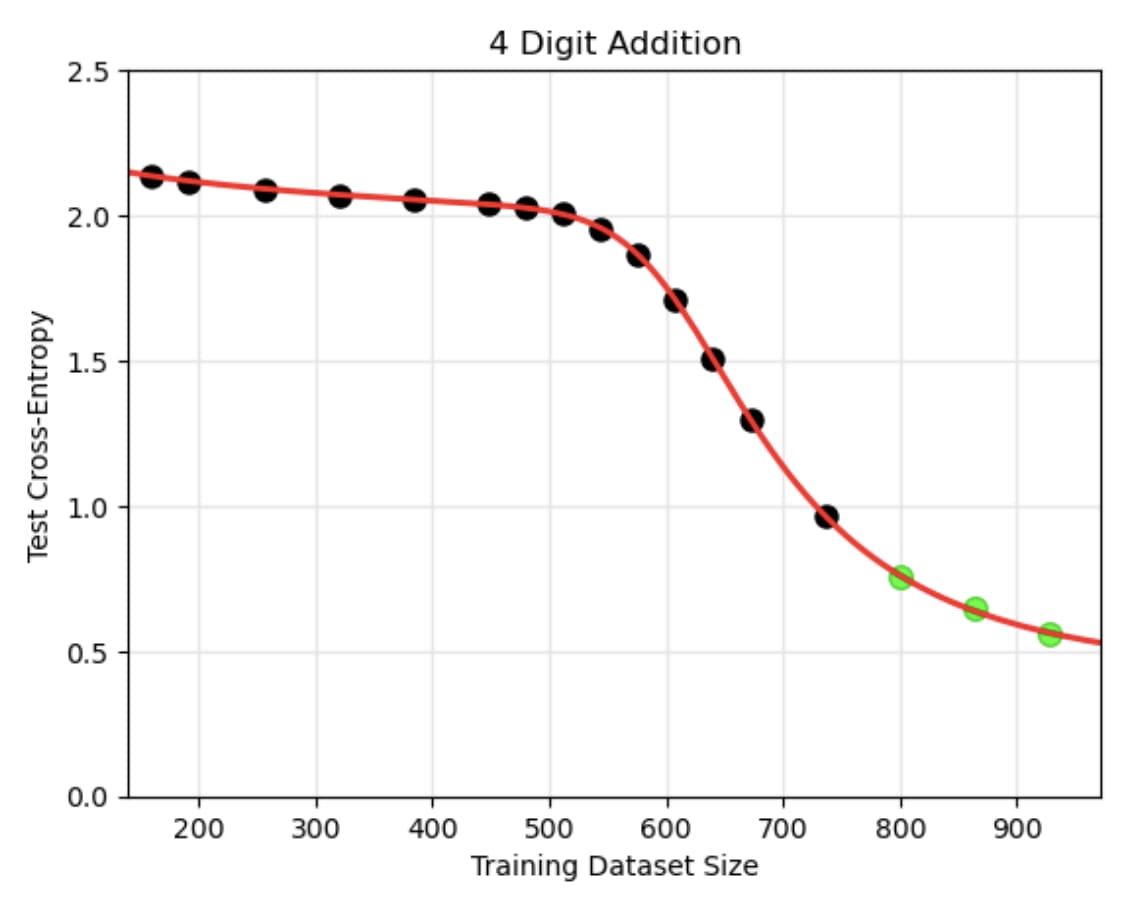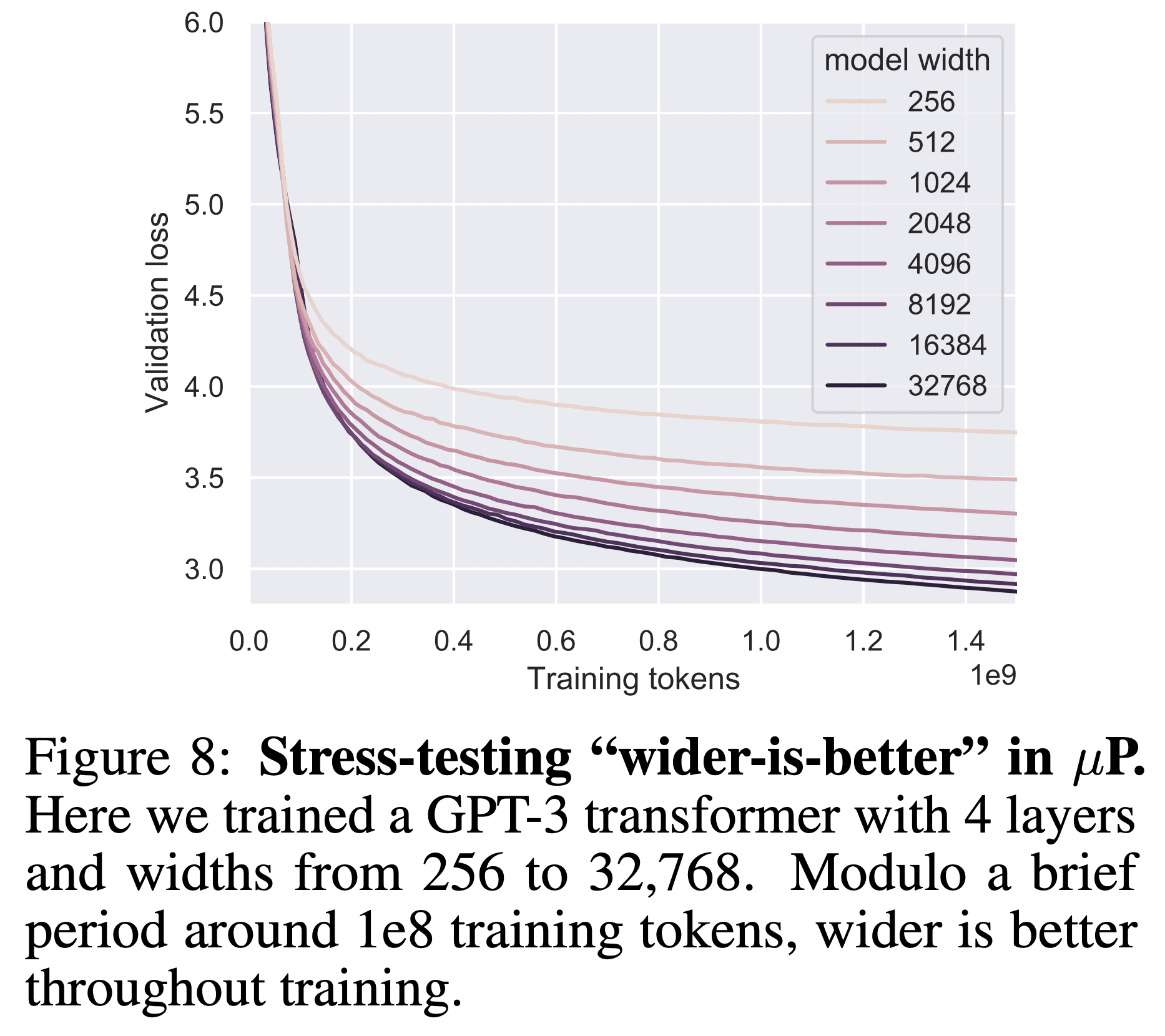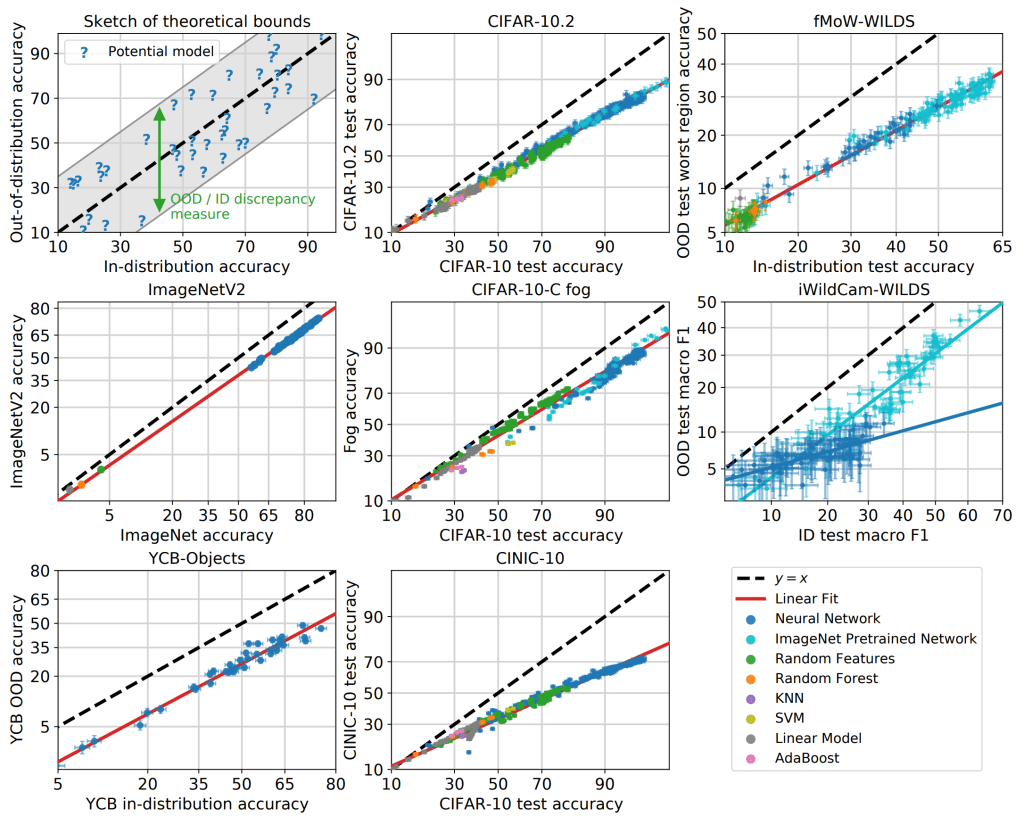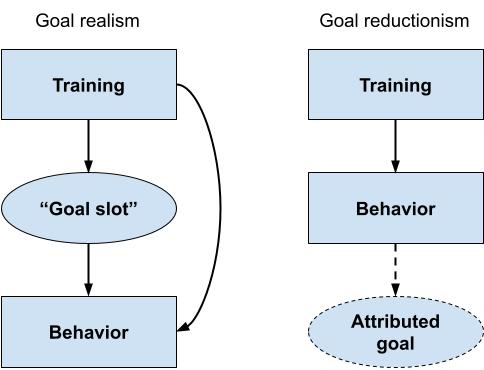Thanks for writing this -- I’m very excited about people pushing back on/digging deeper re: counting arguments, simplicity arguments, and the other arguments re: scheming I discuss in the report. Indeed, despite the general emphasis I place on empirical work as the most promising source of evidence re: scheming, I also think that there’s a ton more to do to clarify and maybe debunk the more theoretical arguments people offer re: scheming – and I think playing out the dialectic further in this respect might well lead to comparatively fast progress (for all their centrality to the AI risk discourse, I think arguments re: scheming have received way too little direct attention). And if, indeed, the arguments for scheming are all bogus, this is super good news and would be an important update, at least for me, re: p(doom) overall. So overall I’m glad you’re doing this work and think this is a valuable post.
Another note up front: I don’t think this post “surveys the main arguments that have been put forward for thinking that future AIs will scheme.” In particular: both counting arguments and simplicity arguments (the two types of argument discussed in the post) assum...
Humans under selection pressure—e.g. test-takers, job-seekers, politicians—will often misrepresent themselves and their motivations to get ahead. That very basic fact that humans do this all the time seems like sufficient evidence to me to consider the hypothesis at all (though certainly not enough evidence to conclude that it's highly likely).
If I examine the causal mechanisms here, I find things like "humans seem to have have 'parameterizations' which already encode situationally activated consequentialist reasoning", and then I wonder "will AI develop similar cognition?" and then that's the whole thing I'm trying to answer to begin with.
Do you believe that AI systems won't learn to use goal-directed consequentialist reasoning even if we train them directly on outcome-based goal-directed consequentialist tasks? Or do you think we won't ever do that?
If you do think we'll do that, then that seems like all you need to raise that hypothesis into consideration. Certainly it's not the case that models always learn to value anything like what we train them to value, but it's obviously one of the hypotheses that you should be seriously considering.
I'm not sure where it was established that what's under consideration here is just deceptive alignment in pre-training. Personally, I'm most worried about deceptive alignment coming after pre-training. I'm on record as thinking that deceptive alignment is unlikely (though certainly not impossible) in purely pretrained predictive models.
I really do appreciate this being written up, but to the extent that this is intended to be a rebuttal to the sorts of counting arguments that I like, I think you would have basically no chance of passing my ITT here. From my perspective reading this post, it read to me like "I didn't understand the counting argument, therefore it doesn't make sense" which is (obviously) not very compelling to me. That being said, to give credit where credit is due, I think some people would make a more simplistic counting argument like the one you're rebutting. So I'm not saying that you're not rebutting anyone here, but you're definitely not rebutting my position.
Edit: If you're struggling to grasp the distinction I'm pointing to here, it might be worth trying this exercise pointing out where the argument in the post goes wrong in a very simple case and/or looking at Ryan's restatement of my mathematical argument.
Edit: Another point of clarification here—my objection is not that there is a "finite bitstring case" and an "infinite bitstring case" and you should be using the "infinite bitstring case". My objection is that the sort of finite bitstring analysis in this post does not yield any well-de...
Thanks for the reply. A couple remarks:
- "indifference over infinite bitstrings" is a misnomer in an important sense, because it's literally impossible to construct a normalized probability measure over infinite bitstrings that assigns equal probability to each one. What you're talking about is the length weighted measure that assigns exponentially more probability mass to shorter programs. That's definitely not an indifference principle, it's baking in substantive assumptions about what's more likely.
- I don't see why we should expect any of this reasoning about Turing machines to transfer over to neural networks at all, which is why I didn't cast the counting argument in terms of Turing machines in the post. In the past I've seen you try to run counting or simplicity arguments in terms of parameters. I don't think any of that works, but I at least take it more seriously than the Turing machine stuff.
- If we're really going to assume the Solomonoff prior here, then I may just agree with you that it's malign in Christiano's sense and could lead to scheming, but I take this to be a reductio of the idea that we can use Solomonoff as any kind of model for real world machine learning. De
"indifference over infinite bitstrings" is a misnomer in an important sense, because it's literally impossible to construct a normalized probability measure over infinite bitstrings that assigns equal probability to each one. What you're talking about is the length weighted measure that assigns exponentially more probability mass to shorter programs. That's definitely not an indifference principle, it's baking in substantive assumptions about what's more likely.
No; this reflects a misunderstanding of how the universal prior is traditionally derived in information theory. We start by assuming that we are running our UTM over code such that every time the UTM looks at a new bit in the tape, it has equal probability of being a 1 or a 0 (that's the indifference condition). That induces what's called the universal semi-measure, from which we can derive the universal prior by enforcing a halting condition. The exponential nature of the prior simply falls out of that derivation.
...I don't see why we should expect any of this reasoning about Turning machines to transfer over to neural networks at all, which is why I didn't cast the counting argument in terms of Turing machines in the pos
Yes, but your original comment was presented as explaining "how to properly reason about counting arguments." Do you no longer claim that to be the case? If you do still claim that, then I maintain my objection that you yourself used hand-wavy reasoning in that comment, and it seems incorrect to present that reasoning as unusually formally supported.
Another concern I have is, I don't think you're gaining anything by formality in this thread. As I understand your argument, I think your symbols are formalizations of hand-wavy intuitions (like the ability to "decompose" a network into the given pieces; the assumption that description length is meaningfully relevant to the NN prior; assumptions about informal notions of "simplicity" being realized in a given UTM prior). If anything, I think that the formality makes things worse because it makes it harder to evaluate or critique your claims.
I also don't think I've seen an example of reasoning about deceptive alignment where I concluded that formality had helped the case, as opposed to obfuscated the case or lent the concern unearned credibility.
I think you should allocate time to devising clearer arguments, then. I am worried that lots of people are misinterpreting your arguments and then making significant life choices on the basis of their new beliefs about deceptive alignment, and I think we'd both prefer for that to not happen.
Here's another fun way to think about this—you can basically cast what's wrong here as an information theory exercise.
Problem:
Spot the step where the following argument goes wrong:
- Suppose I have a dataset of finitely many points arranged in a line. Now, suppose I fit a (reasonable) universal prior to that dataset, and compare two cases: learning a line and learning to memorize each individual datapoint.
- In the linear case, there is only one way to implement a line.
- In the memorization case, I can implement whatever I want on the other datapoints in an arbitrary way.
- Thus, since there are more ways to memorize than to learn a line, there should be greater total measure on memorization than on learning the line.
- Therefore, you'll learn to memorize each individual datapoint rather than learning to implement a line.
Solution:
By the logic of the post, step 4 is the problem, but I think step 4 is actually valid. The problem is step 2: there are actually a huge number of different ways to implement a line! Not only are there many different programs that implement the line in different ways, I can also just take the simplest program that does so and keep on adding comments or other extraneous b
From my perspective reading this post, it read to me like "I didn't understand the counting argument, therefore it doesn't make sense" which is (obviously) not very compelling to me.
I definitely appreciate how it can feel frustrating or bad when you feel that someone isn't properly engaging with your ideas. However, I also feel frustrated by this statement. Your comment seems to have a tone of indignation that Quintin and Nora weren't paying attention to what you wrote.
I myself expected you to respond to this post with some ML-specific reasoning about simplicity and measure of parameterizations, instead of your speculation about a relationship between the universal measure and inductive biases. I spoke with dozens of people about the ideas in OP's post, and none of them mentioned arguments like the one you gave. I myself have spent years in the space and am also not familiar with this particular argument about bitstrings.
(EDIT: Having read Ryan's comment, it now seems to me that you have exclusively made a simplicity argument without any counting involved, and an empirical claim about the relationship between description length of a mesa objective and the probability of...
I myself expected you to respond to this post with some ML-specific reasoning about simplicity and measure of parameterizations, instead of your speculation about a relationship between the universal measure and inductive biases. I spoke with dozens of people about the ideas in OP's post, and none of them mentioned arguments like the one you gave. I myself have spent years in the space and am also not familiar with this particular argument about bitstrings.
That probably would have been my objection had the reasoning about priors in this post been sound, but since the reasoning was unsound, I turned to the formalism to try to show why it's unsound.
If these are your real reasons for expecting deceptive alignment, that's fine, but I think you've mentioned this rather infrequently.
I think you're misunderstanding the nature of my objection. It's not that Solomonoff induction is my real reason for believing in deceptive alignment or something, it's that the reasoning in this post is mathematically unsound, and I'm using the formalism to show why. If I weren't responding to this post specifically, I probably wouldn't have brought up Solomonoff induction at all.
...This yields a perfe
Paradoxically, I think larger neural networks are more simplicity-biased.
The idea is that when you make your network larger, you increase the size of the search space and thus the number of algorithms that you're considering to include algorithms which take more computation. That reduces the relative importance of the speed prior, but increases the relative importance of the simplicity prior, because your inductive biases are still selecting from among those algorithms according to the simplest pattern that fits the data, such that you get good generalization—and in fact even better generalization because now the space of algorithms in which you're searching for the simplest one in is even larger.
Another way to think about this: if you really believe Occam's razor, then any learning algorithm generalizes exactly to the extent that it approximates a simplicity prior—thus, since we know neural networks generalize better as they get larger, they must be approximating a simplicity prior better as they do so.
This isn't a proper response to the post, but since I've occasionally used counting-style arguments in the past I think I should at least lay out some basic agree/disagree points. So:
- This post basically-correctly refutes a kinda-mediocre (though relatively-commonly-presented) version of the counting argument.
- There does exist a version of the counting argument which basically works.
- The version which works routes through compression and/or singular learning theory.
- In particular, that version would talk about "goal-slots" (i.e. general-purpose search) showing up for exactly the same reasons that neural networks are able to generalize in the overparameterized regime more generally. In other words, if you take the "counting argument for overfitting" from the post, walk through the standard singular-learning-theory-style response to that story, and then translate that response over to general-purpose search as a specific instance of compression, then you basically get the good version of the counting argument.
- Just remembered I walked through basically the good version of the counting argument in this section of What's General-Purpose Search, And Why Might We Expect To See It In Trained M
Since there are “more” possible schemers than non-schemers, the argument goes, we should expect training to produce schemers most of the time. In Carlsmith’s words:
It's important to note that the exact counting argument you quote isn't one that Carlsmith endorses, just one that he is explaning. And in fact Carlsmith specifically notes that you can't just apply something like the principle of indifference without more reasoning about the actual neural network prior.
(You mention this later in the "simplicity arguments" section, but I think this objection is sufficiently important and sufficiently missing early in the post that it is important to emphasize.)
Quoting somewhat more context:
...I start, in section 4.2, with what I call the “counting argument.” It runs as follows:
- The non-schemer model classes, here, require fairly specific goals in order to get high reward.
- By contrast, the schemer model class is compatible with a very wide range of (beyond- episode) goals, while still getting high reward (at least if we assume that the other require- ments for scheming to make sense as an instrumental strategy are in place—e.g., that the classic goal-guarding story, or some alternative
We argue against the counting argument in general (more specifically, against the presumption of a uniform prior as a "safe default" to adopt in the absence of better information). This applies to the hazy counting argument as well.
We also don't really think there's that much difference between the structure of the hazy argument and the strict one. Both are trying to introduce some form of ~uniformish prior over the outputs of a stochastic AI generating process. The strict counting argument at least has the virtue of being precise about which stochastic processes it's talking about.
If anything, having more moving parts in the causal graph responsible for producing the distribution over AI goals should make you more skeptical of assigning a uniform prior to that distribution.
I agree that you can't adopt a uniform prior. (By uniform prior, I assume you mean something like, we represent goals as functions from world states to a (real) number where the number says how good the world state is, then we take a uniform distribution over this function space. (Uniform sampling from function space is extremely, extremely cursed for analysis related reasons without imposing some additional constraints, so it's not clear uniform sampling even makes sense!))
Separately, I'm also skeptical that any serious historical arguments were actually assuming a uniform prior as opposed to trying to actual reason about the complexity/measure of various goal in terms of some fixed world model given some vague guess about the representation of this world model. This is also somewhat dubious due to assuming a goal slot, assuming a world model, and needing to guess at the representation of the world model.
(You'll note that ~all prior arguements mention terms like "complexity" and "bits".)
Of course, the "Against goal realism" and "Simplicity arguments" sections can apply here and indeed, I'm much more sympathetic to these sections than to the counting argument section which seems like a strawman as far as I can tell. (I tried to get to ground on this by communicating back and forth some with you and some with Alex Turner, but I failed, so now I'm just voicing my issues for third parties.)
I don't think this is a strawman. E.g., in How likely is deceptive alignment?, Evan Hubinger says:
...We're going to start with simplicity. Simplicity is about specifying the thing that you want in the space of all possible things. You can think about simplicity as “How much do you have to aim to hit the exact thing in the space of all possible models?” How many bits does it take to find the thing that you want in the model space? And so, as a first pass, we can understand simplicity by doing a counting argument, which is just asking, how many models are in each model class?
First, how many Christs are there? Well, I think there's essentially only one, since there's only one way for humans to be structured in exactly the same way as God. God has a particular internal structure that determines exactly the things that God wants and the way that God works, and there's really only one way to port that structure over and make the unique human that wants exactly the same stuff.Okay, how many Martin Luthers are there? Well, there's actually more than one Martin Luther (contrary to actual history) because the Martin Luthers can point to the Bible in different ways. There's a lot of different eq
Deep learning is strongly biased toward networks that generalize the way humans want— otherwise, it wouldn’t be economically useful.
This is NOT what the evidence supports, and super misleadingly phrased. (Either that, or it's straightup magical thinking, which is worse)
The inductive biases / simplicity biases of deep learning are poorly understood but they almost certainly don't have anything to do with what humans want, per se. (that would be basically magic) Rather, humans have gotten decent at intuiting them, such that humans can often predict how the neural network will generalize in response to such-and-such training data. i.e. human intuitive sense of simplicity is different, but not totally different, at least not always, from the actual simplicity biases at play.
Stylized abstract example: Our current AI is not generalizing in the way we wanted it to. Looking at its behavior, and our dataset, we intuit that the dataset D is narrow/nondiverse in ways Y and Z and that this could be causing the problem; we go collect more data so that our dataset is diverse in those ways, and try again, and this time it works (i.e. the AI generalizes to unseen data X). Why did this happen? Why ...
I think that if you do assume a fixed goal slot and outline an overall architecture, then there are pretty good arguments for a serious probabilty of scheming.
(Though there are also plenty of bad arguments, including some that people have made in the past : ).)
That said, I'm sympathetic to some version of the "Against goal realism" argument applying to models which are sufficiently useful. As in, the first transformatively useful models won't in practice contain have internal (opaque-to-human-overseers) goals such that the traditional story for scheming doesn't apply.
(However, it's worth noting that at least some humans do seem to have internal goals and reductionism doesn't defeat this intuition. It's not super clear that the situation with humans is well described as a "goal slot", though there is pretty clearly some stuff that could be changed in a human brain that would cause them to be well described as coherantly pursue different goals. So arguing that AIs won't have internal goals in a way that could result in scheming does require noting some ways in which you're argument doesn't apply to humans. More strongly, humans can and do scheme even in cases where some overseer sele...
(I might write a longer response later, but I thought it would be worth writing a quick response now. Cross-posted from the EA forum, and I know you've replied there, but I'm posting anyway.)
I have a few points of agreement and a few points of disagreement:
Agreements:
- The strict counting argument seems very weak as an argument for scheming, essentially for the reason you identified: it relies on a uniform prior over AI goals, which seems like a really bad model of the situation.
- The hazy counting argument—while stronger than the strict counting argument—still seems like weak evidence for scheming. One way of seeing this is, as you pointed out, to show that essentially identical arguments can be applied to deep learning in different contexts that nonetheless contradict empirical evidence.
Some points of disagreement:
- I think the title overstates the strength of the conclusion. The hazy counting argument seems weak to me but I don't think it's literally "no evidence" for the claim here: that future AIs will scheme.
- I disagree with the bottom-line conclusion: "we should assign very low credence to the spontaneous emergence of scheming in future AI systems—perhaps 0.1% or less"
- I think it's
The current literature on scheming appears to have been inspired by Paul Christiano’s speculations about malign intelligences in Solomonoff induction
This doesn't seem right. The linked post by Paul here is about the (extremely speculative) case where consequentialist life emerges organically inside of full blown simulations (e.g. evolving from scratch) while arguments about ML models never go here.
Regardless, concerns and arguments about scheming are much older than Paul's posts on this topic.
(That said, I do think that people have made scheming style arguments based on intuitions from thinking about AIXI and the space of turing machines at various points. Though this was never very key and I don't believe these arguments are ever in reference to cases where a literal simulation evolves life.)
I feel like there's a somewhat common argument about RL not being all that dangerous because it generalizes the training distribution cautiously - being outside the training distribution isn't going to suddenly cause an RL system to make multi-step plans that are implied but never seen in the training distribution, it'll probably just fall back on familiar, safe behavior.
To me, these arguments feel like they treat present-day model-free RL as the "central case," and model-based RL as a small correction.
Anyhow, good post, I like most of the arguments, I just felt my reaction to this particular one could be made in meme format.
In reality, the problem faced by evolution and by SGD is much easier than this: producing systems that behave the right way in all scenarios they are likely to encounter. In virtue of their aligned behavior, these systems will be “aimed at the right things” in every sense that matters in practice.
I find this passage remarkable, given that so many people are choosing to to have few or no children that fertility has fallen to 0.78 in Korea and 1.0 in China. Presumably you're aware of these (or similar) facts and intended the meaning of this passage to be compatible with them, but I'm having trouble figuring out how...
By contrast, goal realism leads only to unfalsifiable speculation about an “inner actress” with utterly alien motivations.
In order for such speculation to be unfalsifiable, it seemingly has to be the case that we're unable to ever develop good enough interpretability tools to definitively say whether the AI in question has such internal motivations. This could well turn out to be true, but I don't understand how you're able to predict this now. (Or maybe you mean something else by "unfalsifiable" but I can't see what it could be. ETA: Maybe you mean "unfalsifiable...
- It seems like there are “lots of ways” that a model could end up massively overfitting and still get high training performance.
- So absent some additional story about why training won’t select an overfitter, it feels like the possibility should be getting substantive weight.
FWIW, once I learned more about the problem of induction, I realized that there do exist additional stories explaining why training won't select an overfitter. Or perhaps to put it differently, after I understood the problem of induction better it no longer seemed to me that there were lots of ways a model could massively overfit and still get high training performance. (That is, it seems to me there are many MORE ways it could not overfit)
I definitely thought you were making a counting argument over function space
I've argued multiple times that Evan was not intending to make a counting argument in function space:
- In discussion with Alex Turner (TurnTrout) when commenting on an earlier draft of this post.
- In discussion with Quintin after sharing some comments on the draft. (Also shared with you TBC.)
- In this earlier comment.
(Fair enough if you never read any of these comments.)
As I've noted in all of these comments, people consistently use terminology when making counting style arguments (except perhaps in Joe's report) which rules out the person intending the argument to be about function space. (E.g., people say things like "bits" and "complexity in terms of the world model".)
(I also think these written up arguments (Evan's talk in particular) are very hand wavy, and just provide a vague intuition. So regardless of what he was intending, the actual words of the argument aren't very solid IMO. Further, using words that rule out the intention of function space doesn't necessarily imply there is an actually good model behind these words. To actually get anywhere with this reasoning, I think you'd have to reinven...
If that's truly your remaining objection, then I think that you should retract the unmerited criticisms about how they're trying to prove 0.9999... != 1 or whatever. In my opinion, you have confidently misrepresented their arguments, and the discussion would benefit from your revisions.
This point seems right to me: if the post is specifically about representable functions than that is a valid formalization AFAICT. (Though a extremely cursed formalization for reasons mentioned in a variety of places. And if you dropped "representable", then it's extremely, extremely cursed for various analysis related reasons, though I think there is still a theoretically sound uniform measure maybe???)
It would also be nice if the original post:
- Clarified that the rebuttal is specifically about a version of the counting-argument which counts functions.
- Noted that people making counting arguments weren't intending to count functions, though this might be a common misconception about counting arguments. (Seems fine to also clarify that existing counting arguments are too hand wavy to really engage with if that's the view also.) (See also here.)
I obviously don't think the counting argument for overfitting is actually sound, that's the whole point.
Yes, I'm well aware. The problem is that when you make the counting argument for overfitting, you do so in a way that seriously misuses the formalism, which is why the argument fails. So you can't draw any lessons about counting arguments for deception from the failure of your counting argument for overfitting.
But I think the counting argument for scheming is just as obviously invalid, and misuses formalisms just as egregiously, if not moreso.
Then show me how! If you think there are errors in the math, please point them out.
Of course, it's worth stating that I certainly don't have some sort of airtight mathematical argument proving that deception is likely in neural networks—there are lots of assumptions there that could very well be wrong. But I do think that the basic style of reasoning employed by such arguments is sound.
I deny that your Kolmogorov framework is anything like "the proper formalism" for neural networks.
Err... I'm using K-complexity here because it's a simple framework to reason about, but my criticism isn't "you should use K-complexity to reason about...
the problem faced by evolution and by SGD is much easier than this: producing systems that behave the right way in all scenarios they are likely to encounter.
I think you mean "in all scenarios they are likely to encounter *on the training distribution* / in the ancestral environment right? That's importantly different.
In favour of goal realism
Suppose your looking at an AI that is currently placed in a game of chess.
It has a variety of behaviours. It moves pawns forward in some circumstances. It takes a knight with a bishop in a different circumstance.
You could describe the actions of this AI by producing a giant table of "behaviours". Bishop taking behaviours in this circumstance. Castling behaviour in that circumstance. ...
But there is a more compact way to represent similar predictions. You can say it's trying to win at chess.
The "trying to win...
I wrote up my views on the principle of indifference here:
https://www.lesswrong.com/posts/3PXBK2an9dcRoNoid/on-having-no-clue
I agree that it has certain philosophical issues, but I don’t believe that this is as fatal to counting arguments as you believe.
Towards the end I write:
“The problem is that we are making an assumption, but rather than owning it, we're trying to deny that we're making any assumption at all, ie. "I'm not assuming a priori A and B have equal probability based on my subjective judgement, I'm using the principle of indifference". Roll to...
Despite not answering all possible goal-related questions a priori, the reductionist perspective does provide a tractable research program for improving our understanding of AI goal development. It does this by reducing questions about goals to questions about behaviors observable in the training data.
[emphasis mine]
This might be described as "a reductionist perspective". It is certainly not "the reductionist perspective", since reductionist perspectives need not limit themselves to "behaviors observable in the training data".
A more reasonable-to-my-mind b...
Overfitting networks are free to implement a very simple function— like the identity function or a constant function— outside the training set, whereas generalizing networks have to exhibit complex behaviors on unseen inputs. Therefore overfitting is simpler than generalizing, and it will be preferred by SGD.
You're conflating the simplicity of a function in terms of how many parameters are required to specify it, in the abstract, and simplicity in terms of how many neural network parameters are fixed.
The actual question should be something like "how ...
We can salvage a counting argument. But it needs to be a little subtle. And it's all about the comments, not the code.
Suppose a neural network has 1 megabyte of memory. To slightly oversimplify, lets say it can represent a python file of 1 megabyte.
One option is for the network to store a giant lookup table. Lets say the network needs half a megabyte to store the training data in this table. This leaves the other half free to be any rubbish. Hence around possible networks.
The other option is for the network to implement a simple ...
More generally, John Miller and colleagues have found training performance is an excellent predictor of test performance, even when the test set looks fairly different from the training set, across a wide variety of tasks and architectures.
Seems like figure 1 from Miller et al is a plot of test performance vs. "out of distribution" test performance. One might expect plots of training performance vs. "out of distribution" test performance to have more spread.
I think this is an excellent post. I really liked the insight about the mechanisms (and mistakes) shared by the counting arguments behind AI doom and behind "deep learning surely won't generalize." Thank you for writing this; these kinds of loose claims have roamed freely for far too long.
EDIT: Actually this post is weaker than a draft I'd read. I still think it's good, but missing some of the key points I liked the most. And I'm not on board with all of the philosophical claims about e.g. generalized objections to the principle of indifference (in part because I don't understand them).
